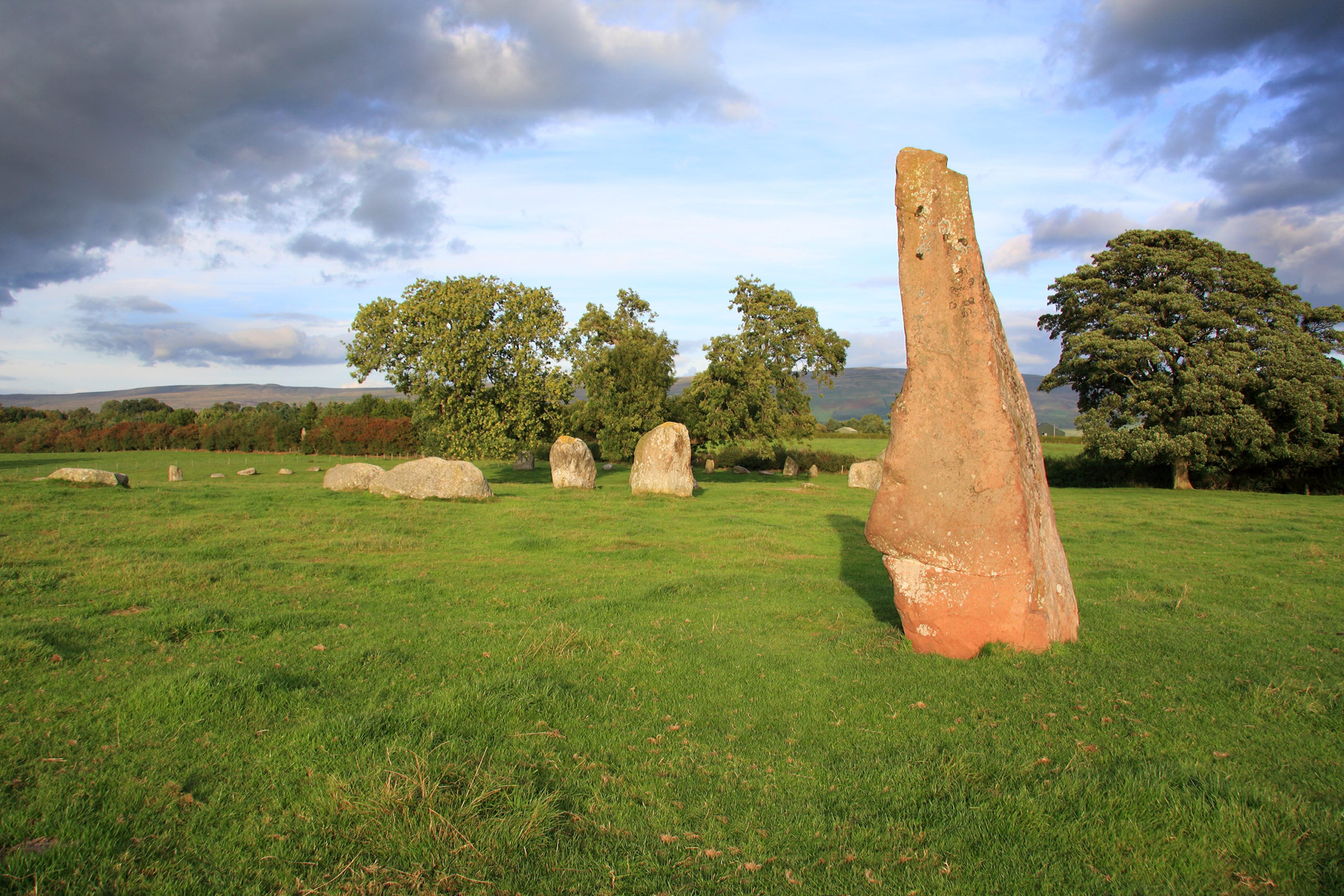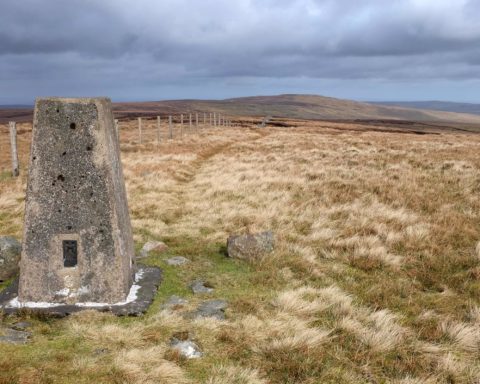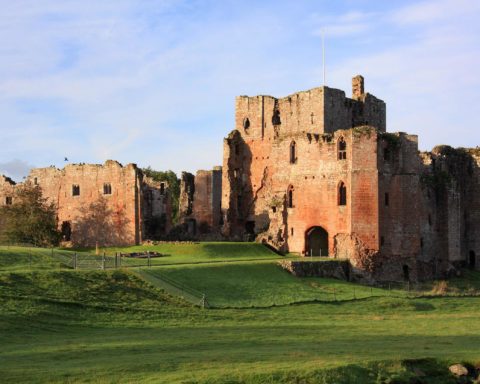When medieval wizard Michael Scott stumbled across a gathering of witches close to the foot of the bleak Pennine hills, he immediately turned them to stone. To this day, so the local legend goes, their petrified remains still stand in a field near the banks of the River Eden.
It’s a nice tale, and there are many other mysterious stories associated with Long Meg and Her Daughters, but the truth, as far as we know it, is that this huge stone circle probably dates from the early Bronze Age. Why it was built, though, we’ll probably never know. It consists of more than 50 stones – although count the same number twice, and you’ll release the witches from their prison. The largest is Long Meg herself, a 12ft-tall megalith standing aloof from the main circle and bearing faint traces of mysterious cup-and-ring markings that are thought to be up to 4500 years old. It’s said that if Long Meg were ever to be shattered, she would run with blood. When local landowner Colonel Lacy tried to destroy the stones in the eighteenth century, a storm broke out and the labourers fled in fear of Black Magic, refusing ever to return.
The stones are most easily approached on foot from the village of Little Salkeld, less than a mile to the south. A popular five-mile circular route takes in the stones, an isolated church that lost its village to the River Eden, and Lacy’s Caves, carved into riverside sandstone cliffs.





